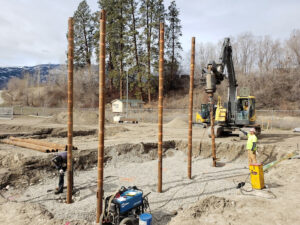
A natural gas dehydrator that can’t keep up with emissions regulations isn’t just outdated, it’s a liability. Regulations in the natural gas industry aren’t exactly light reading, but ignoring them can cost a lot more than just a headache. Producers have been under increasing pressure to limit emissions, and one area getting a lot of attention is natural gas dehydration. It’s not just about getting water out of the gas stream anymore—it’s about doing it without setting off regulatory alarms.
What’s the Big Deal with Dehydrators and Emissions?
Natural gas dehydration units, particularly those using triethylene glycol (TEG), are known sources of emissions. When the glycol is regenerated (essentially boiled to remove absorbed moisture), volatile organic compounds (VOCs) and hazardous air pollutants like BTEX (benzene, toluene, ethylbenzene, and xylene) can be released.
Then there’s methane. Even trace venting or leakage during dehydration cycles can raise red flags, especially under state and federal methane rules. And if the dehydrator isn’t operating efficiently? The emission risks only climb.
What Modern Dehydrators Are Doing Right
Upgrading or specifying the right dehydrator isn’t just a technical decision anymore—it’s a strategic move. Modern units are built with emissions compliance in mind. That means:
- Flash tank separators to minimize methane loss
- Condensation packages that recover hydrocarbons
- Low-emission burners for glycol reboilers
- Emission monitoring ports and automation-ready control interfaces
These aren’t bells and whistles. They’re now part of what helps a system meet EPA New Source Performance Standards (NSPS), BLM rules, and various state environmental codes.
Design It Right the First Time
Size matters. So does pressure, temperature, and the water content in your feed gas. The most common mistake we see? Undersizing a dehydrator in an effort to cut costs upfront. What you save today gets paid back in penalties, lost throughput, or both.
A compliant natural gas dehydrator needs to be correctly sized to your site’s conditions. If not, you’ll deal with overloaded desiccant beds, short-cycling glycol, and unintentional venting—a recipe for emissions that inspectors will not be shy about flagging.
Monitoring Is No Longer Optional
It’s one thing to install a better system. It’s another to keep it running within spec. That’s where proactive monitoring and smart controls come in. More operators are integrating their dehydration units with leak detection systems, SCADA platforms, and emissions reporting tools.
Low-bleed pneumatic controllers and automated sensors help maintain ideal operating conditions without requiring constant manual oversight. You catch problems before they escalate. And more importantly, you have data to show that you’re operating responsibly.
What Happens When You Don’t Prioritize Compliance?
Let’s be blunt: regulators are paying attention. Whether it’s the EPA’s focus on VOCs or state-level methane reduction initiatives, non-compliant dehydration units are getting cited. Penalties range from steep fines to forced shutdowns. And let’s not forget the risk to your facility’s contracts or operating permits if you’re flagged repeatedly.
There’s also the reputational risk. Producers are increasingly judged not just by output, but by environmental performance. Investing in compliant infrastructure isn’t just a checkbox—it’s a signal to stakeholders that you take responsibility seriously.
Making a Smarter Investment
Choosing a natural gas dehydrator that meets modern compliance standards isn’t about over-engineering.
The bottom line? It’s not enough to dry gas. You need to do it cleanly, consistently, and with as little environmental impact as possible.
If your current setup is aging or barely scraping through inspections, it might be time to reassess. The tech is there. So are smarter, more compliant options that don’t require a complete system overhaul.
For operators looking to stay ahead of emissions targets and stay in regulators’ good graces, it pays to invest in a dehydrator that’s designed for the realities of today’s industry.
Looking for options that won’t leave you guessing? Air & Vacuum Process, Inc. has a range of solutions that help keep natural gas dehydration efficient and compliant. It’s worth a visit if staying ahead of the curve matters to your operation.


